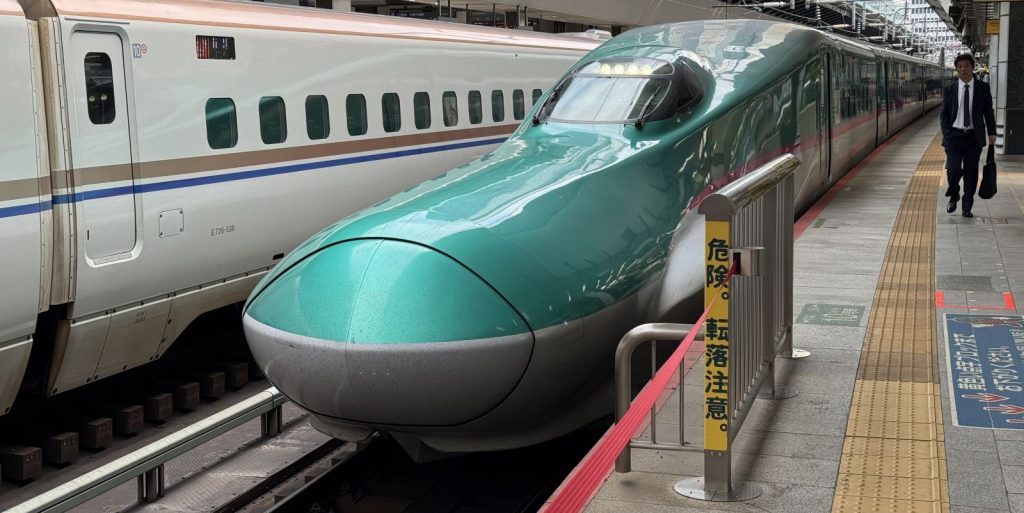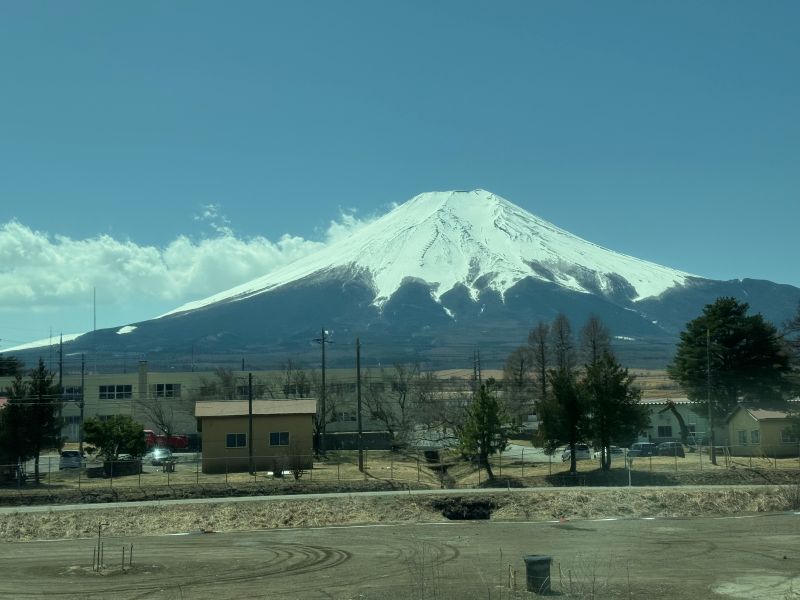Poppin’ Around? Here are the Japan links: Overview | Tokyo | Kyoto | Sendai | Final Day
It’s a simple offer, one that hasn’t worked out yet for all the young people in my life, but still it stands: when you finish school, pick a country and we’ll travel there. No war zones or other demonstrably hazardous places, but otherwise: I’ll do my level best to find a way to make it happen. Covid delayed some of these, but at the end of 2024, two of my nieces, J and M, graduated college. Both expressed an interest in Japan.
This necessitated a bit of planning. Where did they want to go? Cat Island, a cat shrine, a cat cafe; Mount Fuji, sacred deer; I added to this a visit to an old family friend, a musician my age who lived with my parents as an exchange student. We got in touch with him and eventually worked out a plan to meet up in Osaka.
We settled on an itinerary. One niece had to get a passport, but once that was sorted, I booked flights and hotels. We were going to Japan.
Transit and Accommodations
We had several things we wanted to do in Japan, which necessitated getting around to different parts of the country. To minimize unpacking and repacking, we settled on spending a few days each in Tokyo, Kyoto, and Sendai.
We flew Japan Airlines to Haneda Airport, springing for Premium Economy aboard their new fleet of Airbus 350-1000s (The Points Guy has a great write-up). The seats were comfortable, the food was good, and the amenities were thoughtful – all important aspects for a 13+ hour flight each way. We enjoyed the service, which included two checked bags apiece and access to the airline’s Sakura Lounge on the way back home – well worthwhile.

To get around within Japan we relied on Shinkansen bullet trains for changing cities and Japan Rail for some of our excursions. The Man in Seat 61 describes Japan Rail’s system very well; the key points are that we used Japan Rail passes for the middle period of our trip, when we’d be doing most of the rail travel.
Japan Rail passes are for tourists; you cannot buy them in Japan. Instead, you buy them ahead of time, and then redeem them in-country, specifying when you want them to start. You do need to make reservations for green car (first class) seats, even if you have a green car rail pass; you also need to make reservations for any luggage that won’t go in an overhead bin.
This brings me to a really nice feature of travel in Japan: luggage forwarding. Except for our final trip to Tokyo, we would always ask our hotel to forward our big bags to our next hotel. They call your next hotel to confirm you have a reservation, then hire a luggage carrier to send your bags. You need to do this a day or so in advance, meaning you’ll want a change of clothes in something carry-on size, and it does have a (reasonable, about $25 per bag) cost, but it was incredibly convenient to travel light most of the time.
Within the cities we relied on public transportation. In Tokyo and Kyoto this was mostly using Suica cards, which are basically a tap-and-go system similar to OMNY in New York and Oyster in London. Apple iPhone users can add a digital version to the Wallet app and reload it using Apple Pay; otherwise you‘ll need to buy a card and reload it using kiosks in most stations. Suica works on all the metros and buses, and can be used for other things like luggage lockers and some vending machines. On both buses and metros you often tap in and tap out, but some were tap-once, either on boarding or exiting.
For accommodation we stayed in mostly western-style hotels, more because that was easier to book than the traditional-style ryokan. Every place we stayed provided a fresh kimono-style robe and toothbrush with toothpaste daily; this made my pajamas moot but we all tended to prefer our own toothbrushes. In Kyoto, we stayed in a ryokan-style hotel – it operated as a hotel with typical hotel amenities, but the rooms were ryokan style: we slept on tatami mats, shoes were off at the entrance, and sliding doors separated the main room from a sun room and the bathroom area.
Japanese baths are shorter in length but deeper than American tubs; very good for a hot soak. The toilets were all fully-featured unless on a ship or a small park: heated seats, front and back bidet spray. It’s actually quite nice.
Lastly, on the subject of baths, I should mention Japanese Onsen. Traditionally these are fed by hot springs, but the hotel in Kyoto had an artificial one – think large sauna room – and in Sendai I went to one near the hotel. We did eventually visit a natural spring onsen. One enters a changing room and gets completely undressed; that is to say, naked, and then proceed to the onsen with only a small towel handy. Shower first, get all the suds out, and then…onsen. Soak, perhaps get out for a cold splash, repeat.
Poppin’ Around? Here are the Japan links: Overview | Tokyo | Kyoto | Sendai | Final Day
I’ve written a breezy travelogue that’s not much more than points to give context to the photos. This was a great trip; I couldn’t ask for better traveling companions. This was a family trip as much as a holiday abroad.
To get started, do as we did, and begin in Tokyo.
